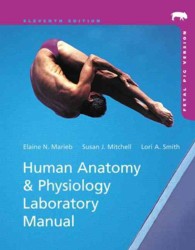Full Description
NOTE: Before purchasing, check with your instructor to ensure you select the correct ISBN. Several versions of the MyLabTM and MasteringTM platforms exist for each title, and registrations are not transferable. To register for and use MyLab or Mastering, you may also need a Course ID, which your instructor will provide.
Used books, rentals, and purchases made outside of Pearson
If purchasing or renting from companies other than Pearson, the access codes for the MyLab platform may not be included, may be incorrect, or may be previously redeemed. Check with the seller before completing your purchase.
For courses in emergency medical responder programs.
Help students think like EMRs
The leader in the field, Emergency Medical Responder: First on Scene provides clear, first responder¿-level training for fire service, emergency, law enforcement, military, civil, and industrial personnel. The text is based on the new National Emergency Medical Services Education Standards for Emergency Medical Responders and includes the 2017 Focused Updates from the American Heart Association Guidelines for Cardiopulmonary Resuscitation and First Aid. The fully updated 11th edition covers new topics recently introduced into emergency medical responder programs.
Also available with MyLab BRADY
By combining trusted author content with digital tools and a flexible platform, MyLab personalizes the learning experience and improves results for each student. Designed for EMS students and educators, MyLab BRADY engages students with unique practice opportunities, while supporting educators with valuable teaching material.
Contents
Introduction to EMS Systems
Legal and Ethical Principles of Emergency Care
Wellness and Safety of the Emergency Medical Responder
Introduction to Medical Terminology, Human Anatomy, and Lifespan Development
Introduction to Pathophysiology
Principles of Lifting, Moving, and Positioning of Patients
Principles of Effective Communication
Principles of Effective Documentation
Principles of Airway Management and Ventilation
Principles of Oxygen Therapy
Principles of Resuscitation
Obtaining a Medical History and Vital Signs
Principles of Patient Assessment
Caring for Cardiac Emergencies
Caring for Respiratory Emergencies
Caring for Common Medical Emergencies
Caring for Environmental Emergencies
Caring for Soft-Tissue Injuries and Bleeding
Recognition and Care of Shock
Caring for Muscle and Bone Injuries
Caring for Head and Spinal Injuries
Caring for Chest and Abdominal Emergencies
Care During Pregnancy and Childbirth
Caring for Infants and Children
Special Considerations for the Geriatric Patient
Introduction to EMS Operations and Hazardous Response
Introduction to Multiple-Casualty Incidents, the Incident Command System, and Triage
Appendices
Patient Monitoring Devices
Principles of Pharmacology
Air Medical Transport Operations
Introduction to Terrorism Response and Weapons of Mass Destruction








